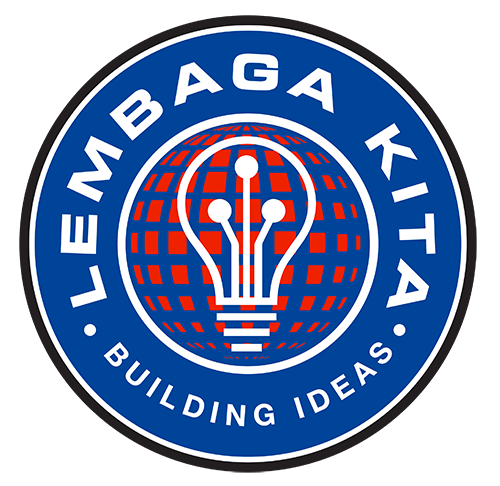TEMPLATE
- journal@kawanad.com
- Banda Aceh City, Indonesia
- +6285277777449
Article
Interaksi Antara Dunia Digital dan Fisik: Pemanfaatan Teknologi Simulasi Digital dan Cetak 3D
- Authors Alesha Khaira , Syafrinal
- Affiliations
- Published 2023-06-30
- Section Article
- DOI https://doi.org/10.56347/jdtt.v2i1.147
- Issue Vol. 2 No. 1 (2023): June 2023
0
Views
1.980
Downloads
Altmetrics
Abstract
Digital simulation technology and 3D printing have eliminated the boundaries between the digital and physical world in the current digital era. This article aims to explore the increasingly close integration between the two domains through the use of digital simulation technology and 3D print. This research explores the application of this technology in various industrial sectors, examines the benefits offered, and identify the challenges faced in the implementation process. Literature study methods and secondary data analysis are used to present a comprehensive picture of the development of digital simulation and 3D print technology. This technology not only accelerates the design and production process, but also increases operational efficiency and encourages innovation in various industrial fields. This study reveals technology adoption by the manufacturing sector for fast prototyping and its important role in education to increase student involvement. Despite its various benefits, the implementation of this technology faces significant challenges such as high initial costs and resistance to change. However, with sustainable research and development and expanding industrial capacity, the potential of digital simulation technology and 3D print to improve innovation and future efficiency remains large. In conclusion, this article highlights the crucial role of digital simulation technology and 3D print in connecting the digital and physical world. By continuing to explore new applications and overcome existing challenges, it can be created a future where this technology not only supports industrial progress, but also strengthens the integration between virtual and physical reality faced today.
Keywords
Digital Simulation Technology; Print 3D; Digital-physical Interaction; Industrial Innovation; Production Efficiency
References
- Chaffey, D., & Ellis-Chadwick, F. (2019). Digital marketing. Pearson uk.
- Darso, D. (2023). Pelatihan ESP8266 bagi siswa SMK N Kutasari Purbalingga untuk pembelajaran Internet of Things (IoT). Abdine Jurnal Pengabdian Masyarakat, 3(2), 179-184. https://doi.org/10.52072/abdine.v3i2.645
- Dewa, R., Aulia, A., Bhiftime, E., Permata, A., Farida, I., & Shiraj, R. (2023). Perancangan mutakhir material propelan padat dengan metode pembuatan prototipe cepat. Jurnal Rekayasa Mesin, 18(1), 1. https://doi.org/10.32497/jrm.v18i1.3877
- Eke, H. N. (2012). Creating a digital footprint as a means of optimizing the personal branding of librarians in the digital society. Webology, 9(2), 31-40.
- Hapsari, T., & Wahyudi, W. (2021). Pengembangan program aplikasi berbasis Android pada majalah Suara Aisyiyah. Prosiding Seminar Nasional Program Pengabdian Masyarakat. https://doi.org/10.18196/ppm.310.389
- Hasanah, U. (2023). Implementasi literasi digital dalam pendidikan Islam: tantangan dan solusi. Equilibrium Jurnal Pendidikan, 11(2), 177-188. https://doi.org/10.26618/equilibrium.v11i2.10426
- Karakaya, E. (2015). Development of an agent based modelling and simulation tool for anticipatory change planning for cellular transport systems. Nobel.
- Kassiuw, J. (2023). Implementasi rekam medis elektronik dengan pendekatan metode Technology Acceptance Model. Syntax Literate Jurnal Ilmiah Indonesia, 8(6), 4074-4085. https://doi.org/10.36418/syntax-literate.v8i6.12547
- Khaerawati, S., & Noval, M. (2023). Aplikasi Pembelajaran Pedosfer Berbasis Augmented Reality. Jurnal JTIK (Jurnal Teknologi Informasi dan Komunikasi), 7(2), 280-285. https://doi.org/10.35870/jtik.v7i2.757
- Maharani, A. (2023). The Role of Technology And Learning Media For Elementary School Students In Civility Education Learning. International Journal of Students Education, 2(1), 261-264. https://doi.org/10.62966/ijose.v2i1.310.
- Mobinizad, M. M. (2018). The use of mobile technology in learning English language. Theory and Practice in Language Studies, 8(11), 1456-1468.
- Mualif, A. (2023). Format-format birokrasi: sebuah studi tentang pengorganisiran dan penyusunan format dalam administrasi pemerintahan. https://doi.org/10.31219/osf.io/872k4
- Perbaw, Y., Astuti, R., & Pratama, B. (2021). Pelatihan penggunaan aplikasi untuk memproduksi bahan ajar bagi guru SMP Budya Wacana Yogyakarta. Sendimas 2021 - Seminar Nasional Pengabdian Kepada Masyarakat, 6(1), 203-210. https://doi.org/10.21460/sendimasvi2021.v6i1.48
- Rotty, C. (2023). Penerapan problem based learning untuk meningkatkan hasil belajar siswa pada mata pelajaran simulasi dan komunikasi digital SMK Negeri 6 Bitung. Edutik Jurnal Pendidikan Teknologi Informasi Dan Komunikasi, 3(4), 522-528. https://doi.org/10.53682/edutik.v3i4.7608
- Sarjito, A. (2023). Dampak digitalisasi administrasi perdesaan di negara berkembang. Jurnal Ilmiah Ilmu Administrasi, 13(2), 106-124. https://doi.org/10.33592/jiia.v13i2.3814
- Syaifudin, A., Effendi, M., Pramono, A., Kaelani, Y., Ariatedja, J., Harnany, D., ... & Yohanes, Y. (2022). Analisis efektivitas pelatihan singkat 3D modelling, 3D scanning dan 3D printing pada siswa SMA. Sewagati, 6(5). https://doi.org/10.12962/j26139960.v6i5.283
- Wahidin, U. (2018). Implementasi literasi media dalam proses pembelajaran pendidikan agama Islam dan budi pekerti. Edukasi Islami Jurnal Pendidikan Islam, 7(02), 229. https://doi.org/10.30868/ei.v7i2.284
- Windiarti, L., Waludjo, D., & Fatirul, A. (2022). Pengembangan media buku digital simulasi dan komunikasi digital menggunakan landing page. Jipi (Jurnal Ilmiah Penelitian Dan Pembelajaran Informatika), 7(1), 66-73. https://doi.org/10.29100/jipi.v7i1.2424
- Windiarti, L., Waludjo, D., & Fatirul, A. (2022). Pengembangan media buku digital simulasi dan komunikasi digital menggunakan landing page. Jipi (Jurnal Ilmiah Penelitian Dan Pembelajaran Informatika), 7(1), 66-73. https://doi.org/10.29100/jipi.v7i1.2424
- Yusoff, M. F., Zulkifli, A. N., & Mohamed, N. F. (2016). Development and user evaluation of virtual hajj (V-Hajj) courseware for hajj learning procedures. Int. J. Interact. Digit. Media, 4(1), 18-23.
- Yusuf, M., Basmar, N., Baruch, M., Suci, N., & Wulandari, R. (2022). Kegiatan sosialisasi digital marketing pelaku UMKM untuk memberdayakan ekonomi masyarakat. Surya Abdimas, 7(1), 34-42. https://doi.org/10.37729/abdimas.v7i1.2208
Author Biographies


Similar Articles
Discover other articles with topics similar to what you're currently reading. Find more references and expand your knowledge base.

More Similar Articles
Aplikasi Persediaan Barang Gudang di Ace Hardware...
Naufal Alfiansyah, Widyat Nurcahayo, NM Faizah
Vol. 3 No. 1 (2024): June 2024Rancang Bangun Aplikasi Sistem Penggajian Karyawan di...
Aukladia Fitri Rero, NM Faizah, Widyat Nurcahyo
Vol. 3 No. 1 (2024): June 2024Rancangan Jaringan Fiber to The Tower (FTTT): Studi Kasus...
Jupri Daniel, NM Faizah, Luky Fabrianto
Vol. 2 No. 2 (2023): December 2023Implementasi Jaringan Internet Menggunakan Tenda N301
Ardiansyah Ardiansyah
Vol. 3 No. 2 (2024): December 2024Most read articles by the same author(s)
Related Articles
Fathurrahmad, Syafrinal
Syafrinal, Bahruni, Syarifuddin, Fauzan Putraga Albahri
















